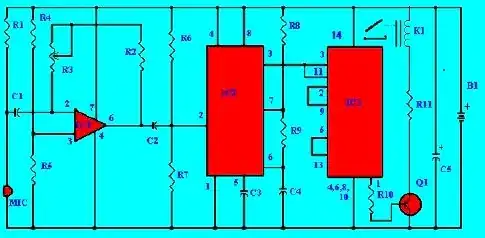I'd like to know how a 'hand clap' switch works. You know, the kind where you *clap-clap* and the light turns on, *clap-clap* again and the light turns off.
How is the clapping sound detected? How can it be differentiated from whistling, people talking, a barking dog, ... ? Can it be another kind of sound?
What kind of components would I need to build such a sensor/switch, assuming everything works on DC?
Note: I am not interested in just buying a Velleman kit :-)
